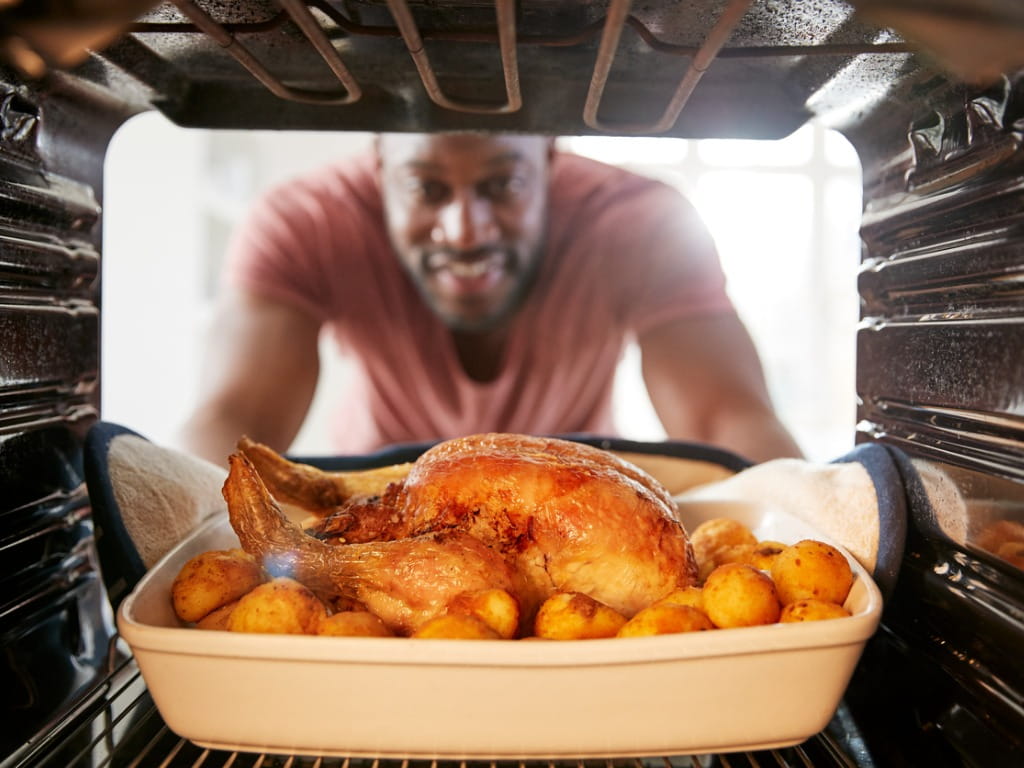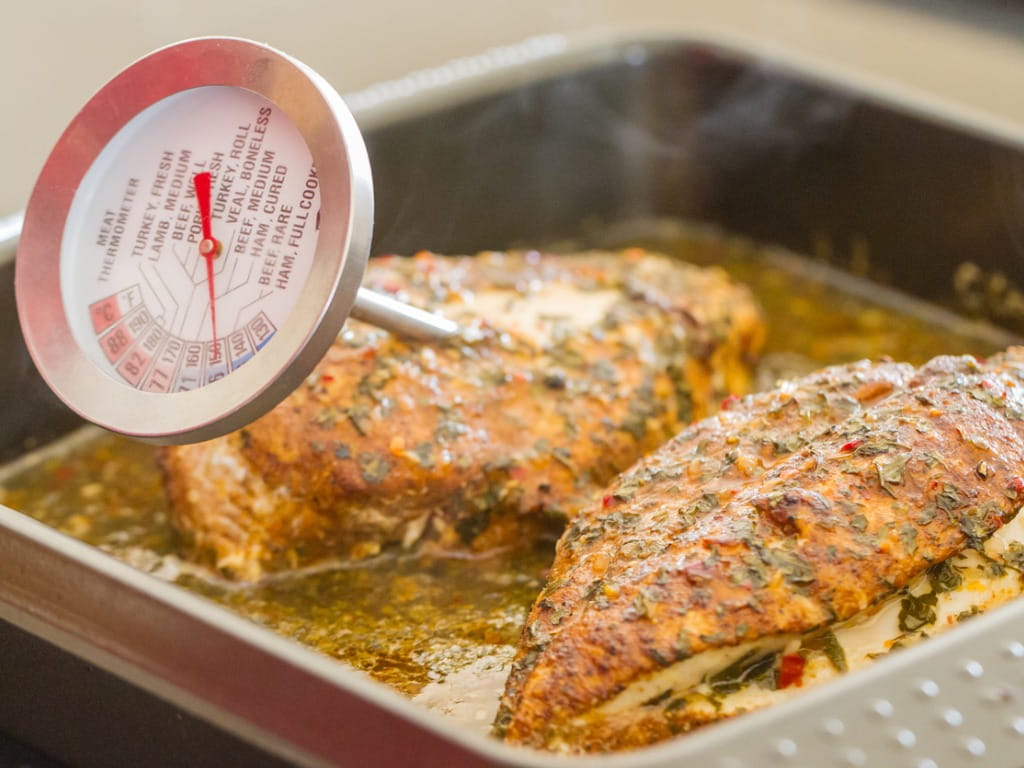What's the Safest Way to Cook Chicken?

The Bottom Line
Raw chicken should be cooked in an oven to an internal temperature of 165 degrees Fahrenheit. Washing or rinsing chicken during food preparation can spread germs and increase the risk of illness. Salmonella, a common foodborne illness, causes self-limited gastrointestinal symptoms in most people, but certain individuals may develop severe infection.

Do you wash chicken before cooking it?
Many people believe that washing or rinsing chicken, turkey, or other meats can remove bacteria and other germs from the meat. While washing can remove blood and slime from meat, it can also cause the accidental and microscopic transfer of germs to nearby foods, sinks, countertops, or kitchen surfaces, a process called “cross-contamination”. In one study of people who washed raw poultry, 60% had bacteria present in their sink after washing or rinsing the meat. Even when people attempted to clean their sink after washing poultry, 14% of these individuals still had bacteria present in the sink. These leftover bacteria, including Salmonella and Campylobacter, can cause serious infections. Due to the risks of cross-contamination, including foodborne illnesses, the United States Department of Agriculture (USDA) and Food and Drug Administration (FDA) recommend that people do not rinse or wash meat or poultry during food preparation.
What is the cooking temperature for chicken?
Raw chicken, including frozen uncooked chicken products, must be cooked to an internal temperature of at least 165 degrees Fahrenheit in order to kill foodborne bacteria such as Salmonella. To reduce the risk of foodborne illness, always use a food thermometer when cooking poultry and meat products.
Can you cook chicken in the microwave?
Microwave ovens, air fryers, and toaster ovens don’t always cook chicken thoroughly to 165 degrees, and this increases the risk of food poisoning. Use of microwave ovens does not result in uniform heating of frozen or raw chicken products, even when chicken is covered or flipped during the cooking process. In addition, microwave ovens that have lower wattage (600 Watts) generally do not cook frozen or raw chicken products thoroughly enough to kill Salmonella.
Is Salmonella a bacteria?
Salmonella is a bacteria that causes multiple clinical syndromes in humans, including fever and gastrointestinal illness. Salmonella is the most common cause of bacterial food poisoning in the United States, and is responsible for over one million cases of foodborne illness in the United States each year.
Where does Salmonella come from?
Salmonella is present in the intestines of chickens and other animals, and is shed in their feces. Since birds infected with Salmonella are often asymptomatic, infected animals can be difficult to identify. Chicken meat and eggs can easily become contaminated with Salmonella during processing. Salmonella can also be introduced into fresh fruits and vegetables through contaminated soil or water as well as during the harvesting process. Salmonella can survive refrigeration, and can spread to humans due to improper food preparation or consumption of undercooked food.
What are Salmonella symptoms?
Symptoms of foodborne Salmonella infection include fever, abdominal pain, and diarrhea. Signs and symptoms of Salmonella gastroenteritis typically occur within hours to days of exposure to the bacteria. Most people recover within several days, but the illness may last for weeks in some individuals.
How is Salmonella treated?
Most cases of Salmonella are self-limiting and do not require specific treatment. In some cases, intravenous fluids may be required to treat dehydration from diarrhea. People with weakened immune systems, or those who have severe forms of illness, may require hospitalization and treatment with antibiotics.
What should I do if I have food poisoning?
If you or a loved one experiences food poisoning symptoms, get guidance from Poison Control immediately. Help from Poison Control is available at www.poison.org and by phone at 1-800-222-1222. Both options are free, confidential, and available 24 hours a day.
Kelly Johnson-Arbor, MD
Medical Toxicologist
For media inquiries, please contact Krista Osterthaler at osterthaler@poison.org.
Poisoned?
Call 1-800-222-1222 or
Prevention Tips
- Do not rinse or wash meat, including raw chicken, during food preparation.
- Wash your hands with soap and water after handling raw chicken or other raw meat.
- Use a meat thermometer when cooking chicken and other meat products.
This Really Happened
In January 2022, the Nebraska Department of Health and Human Services was notified of a Salmonella outbreak involving inmates at a correctional facility located within the state. An investigation identified a total of 15 cases of Salmonella illness in inmates who had prepared chili using raw chicken. Two of the affected individuals required hospitalization. Health Department investigators discovered that the chicken was not thawed completely before cooking and that the internal temperature of the chicken was not monitored during the cooking process. The Health Department then worked with the correctional facility to improve the food safety practices used at the institution.For More Information
References
Hohmann EL. Nontyphoidal salmonellosis. Clin Infect Dis. 2001 Jan 15;32(2):263-9.
Poisoned?
Call 1-800-222-1222 or
Prevention Tips
- Do not rinse or wash meat, including raw chicken, during food preparation.
- Wash your hands with soap and water after handling raw chicken or other raw meat.
- Use a meat thermometer when cooking chicken and other meat products.
